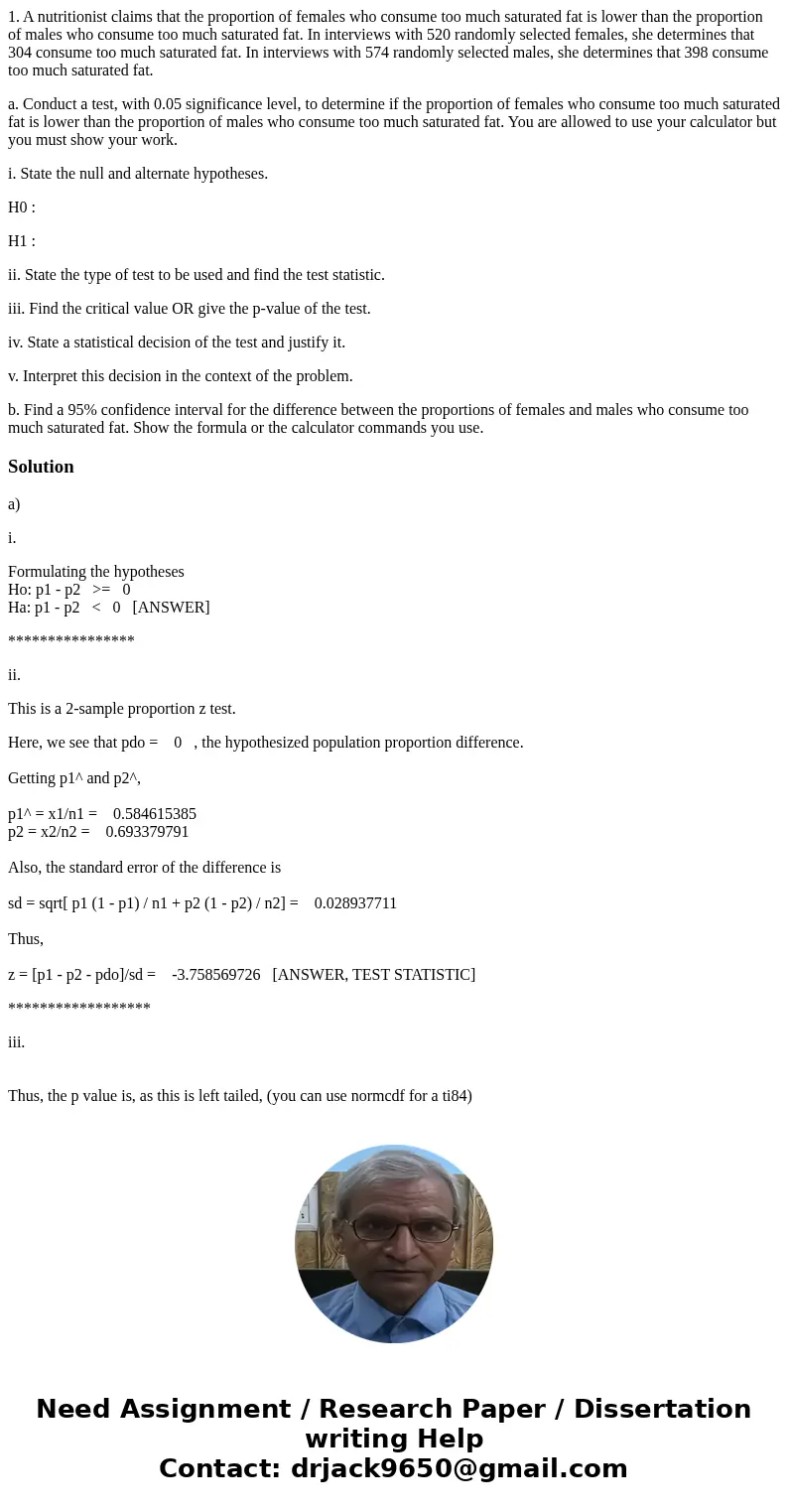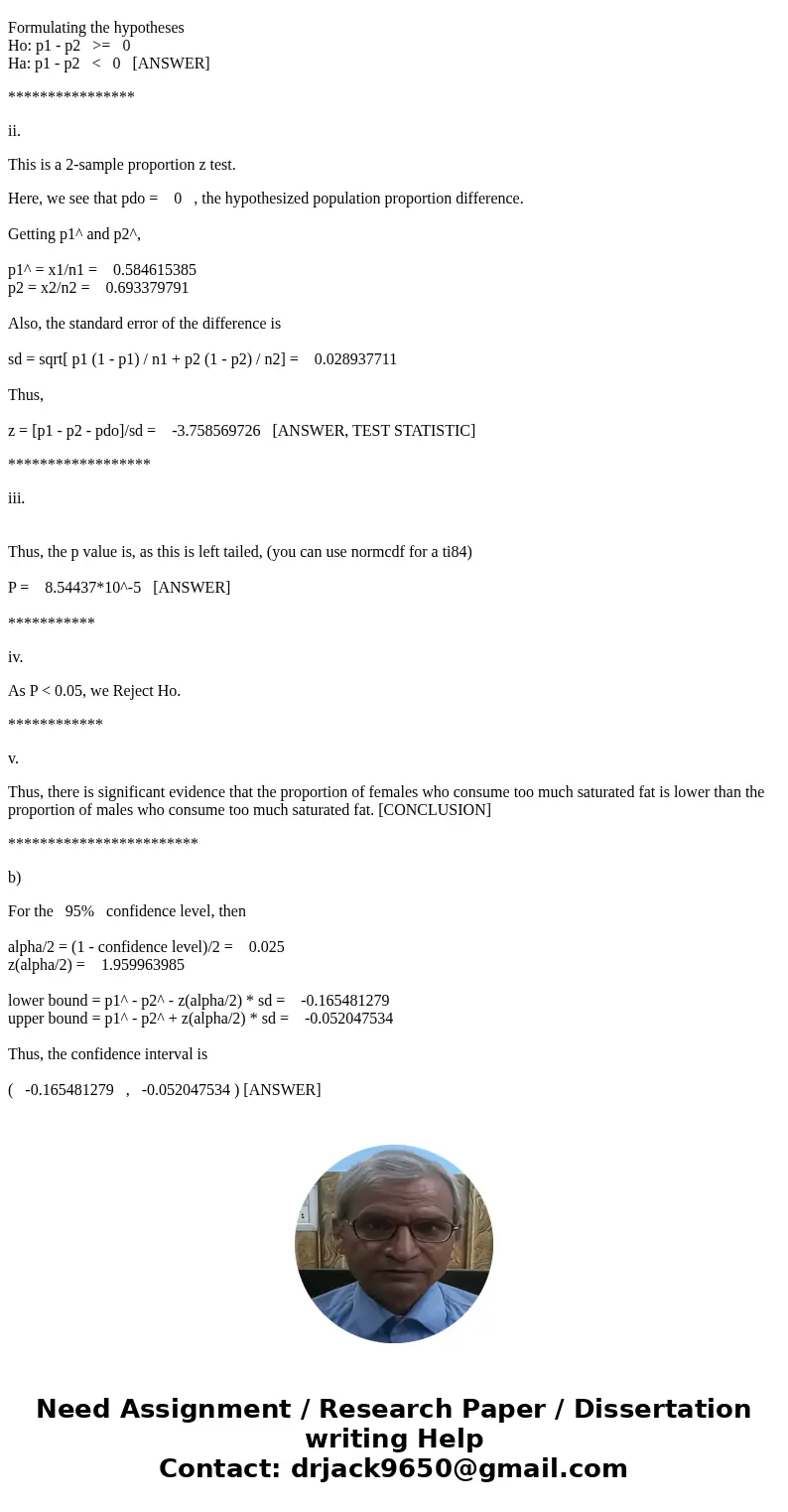1 A nutritionist claims that the proportion of females who c
1. A nutritionist claims that the proportion of females who consume too much saturated fat is lower than the proportion of males who consume too much saturated fat. In interviews with 520 randomly selected females, she determines that 304 consume too much saturated fat. In interviews with 574 randomly selected males, she determines that 398 consume too much saturated fat.
a. Conduct a test, with 0.05 significance level, to determine if the proportion of females who consume too much saturated fat is lower than the proportion of males who consume too much saturated fat. You are allowed to use your calculator but you must show your work.
i. State the null and alternate hypotheses.
H0 :
H1 :
ii. State the type of test to be used and find the test statistic.
iii. Find the critical value OR give the p-value of the test.
iv. State a statistical decision of the test and justify it.
v. Interpret this decision in the context of the problem.
b. Find a 95% confidence interval for the difference between the proportions of females and males who consume too much saturated fat. Show the formula or the calculator commands you use.
Solution
a)
i.
Formulating the hypotheses
Ho: p1 - p2 >= 0
Ha: p1 - p2 < 0 [ANSWER]
****************
ii.
This is a 2-sample proportion z test.
Here, we see that pdo = 0 , the hypothesized population proportion difference.
Getting p1^ and p2^,
p1^ = x1/n1 = 0.584615385
p2 = x2/n2 = 0.693379791
Also, the standard error of the difference is
sd = sqrt[ p1 (1 - p1) / n1 + p2 (1 - p2) / n2] = 0.028937711
Thus,
z = [p1 - p2 - pdo]/sd = -3.758569726 [ANSWER, TEST STATISTIC]
******************
iii.
Thus, the p value is, as this is left tailed, (you can use normcdf for a ti84)
P = 8.54437*10^-5 [ANSWER]
***********
iv.
As P < 0.05, we Reject Ho.
************
v.
Thus, there is significant evidence that the proportion of females who consume too much saturated fat is lower than the proportion of males who consume too much saturated fat. [CONCLUSION]
************************
b)
For the 95% confidence level, then
alpha/2 = (1 - confidence level)/2 = 0.025
z(alpha/2) = 1.959963985
lower bound = p1^ - p2^ - z(alpha/2) * sd = -0.165481279
upper bound = p1^ - p2^ + z(alpha/2) * sd = -0.052047534
Thus, the confidence interval is
( -0.165481279 , -0.052047534 ) [ANSWER]


 Homework Sourse
Homework Sourse